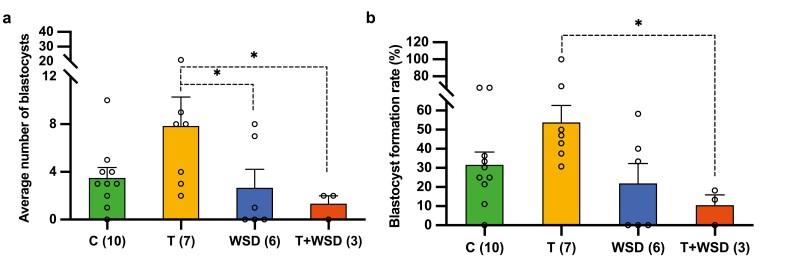Figure 3.
Preimplantation developmental outcomes after long-term Western-style diet (WSD) consumption and/or hyperandrogenemia exposure. (A) The average number of blastocysts (±SE of the mean) formed per female were significantly reduced in the WSD and testosterone (T) + WSD groups (*P < 0.05). There was also a trend for the T group to yield a greater number of blastocysts per animal relative to the T + WSD (P = 0.065) or the WSD group (P = 0.12). (B) The mean blastocyst formation rate (±SE of the mean) in the T + WSD group was significantly lower relative to the blastocyst formation rate in the T group (*P < 0.05). The numbers in parentheses along the x-axes in (A) and (B) indicate the number of females that underwent the controlled ovarian stimulation protocol in each treatment group. Poisson regression, followed by the 3 degrees-of-freedom chi-square test, was used for calculating the statistical significance of the blastocyst numbers and blastocyst formation rate among the treatment groups.

